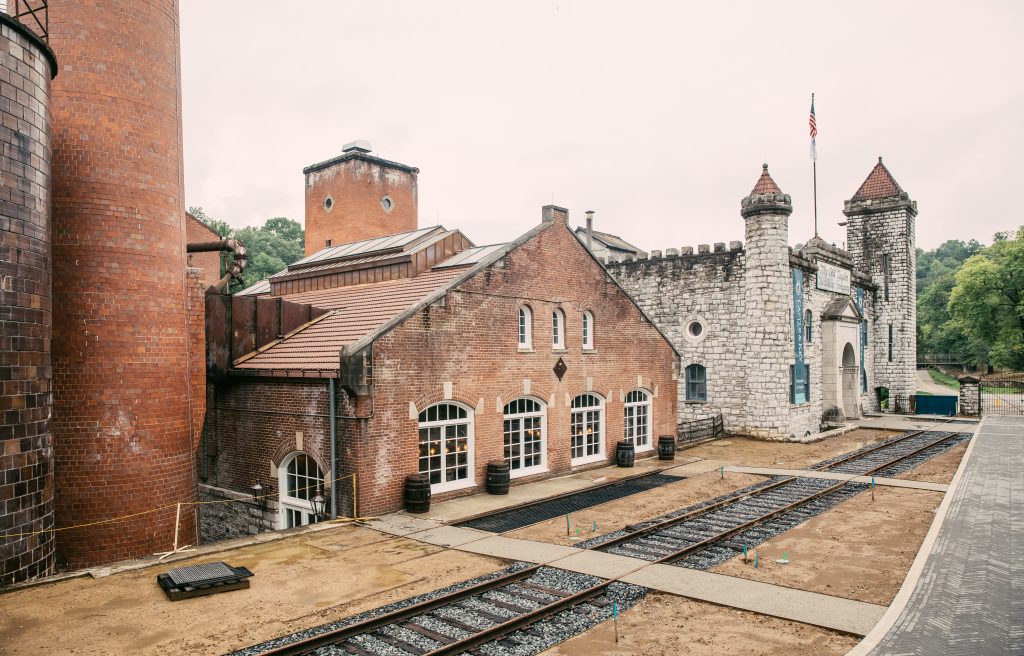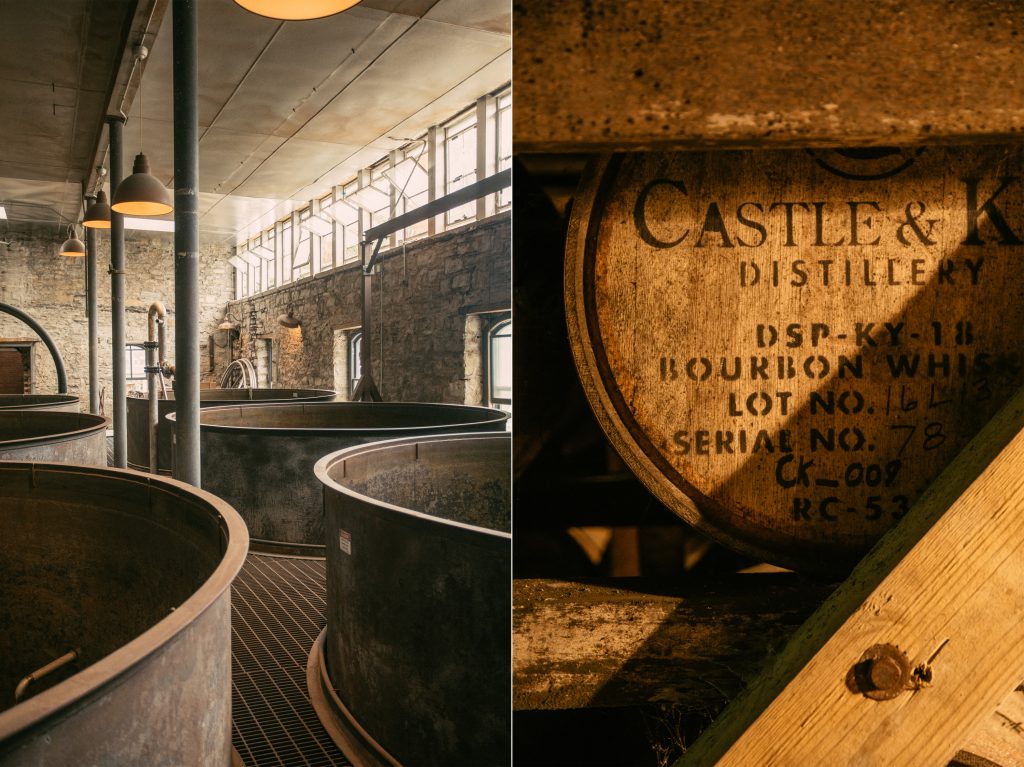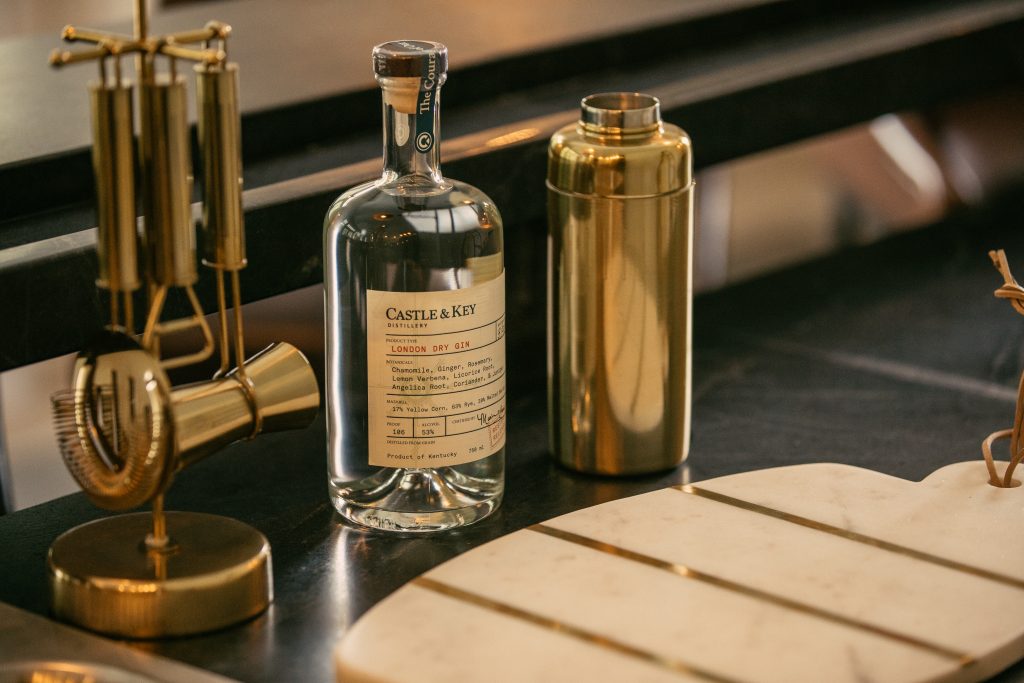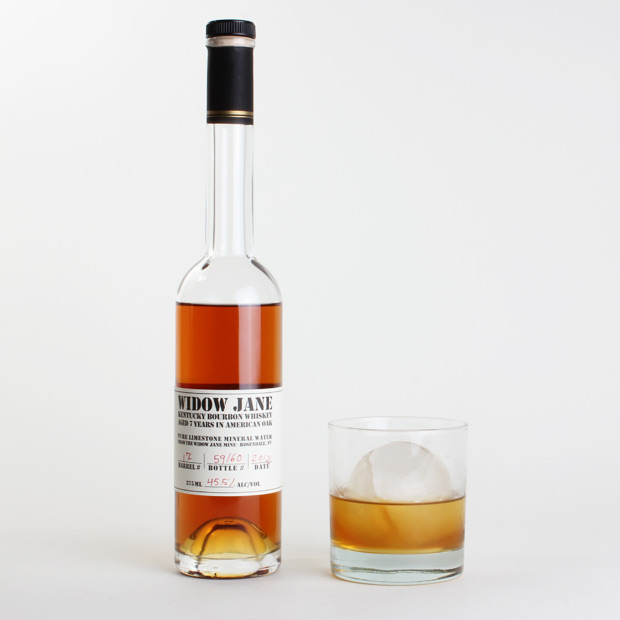Castle & Key’s Historic Kentucky Distillery
113 acres and 22 reclaimed buildings under the watch of a Master Distiller with a vision for the future of high-end spirits

For more than 40 years, 113 acres of land just outside of Frankfort, Kentucky—and the distillery thereupon, built by legendary distiller Colonel Edmund Haynes Taylor—sat idle until the founders of Castle & Key tapped into its potential for two reasons. First, they had a vision of premium spirits crafted from locally sourced ingredients. Second, they recognized that the site—with 22 crumbling, vegetation-covered buildings—could return to its original mission as a destination for bourbon tourism. Tapping Marianne Eaves (the first woman to earn the title of Master Distiller in Kentucky since Prohibition) to helm spirit development and production, they set off to build a new brand in the heart of bourbon country. Some of the products are now out in the market, but it’s the compound itself that’s simply so alluring one must see it to believe it.

“It’s been a long journey,” Eaves explains. “It took four years to get here, with a lot of fits and starts along the way.” Eaves had a substantial hand in launching the distillery with co-owners Will Arvin and Wes Murry and partner Brook Smith, not just the liquid. “People are always interested to know if we were able to use a lot of the old equipment,” she begins. “It stopped producing in the ’70s—and most of the equipment is from the ’30s. It was frozen in time at the peak of industry, before it all declined. National Distillers could not use the limited capacity so they stopped production here and continued down the road. There was some activity off and on; some bottling and barreling to the mid ’90s, but that’s it. No production. The grounds were not being maintained. And, in April 2014, the bid was made to purchase property.”

It all began with clearing the site of vines, and attempting to figure out what remained. “They had a crazy vision and faith in what it could become” she continues (knowing it was originally a very small distillery and more a tourist destination). “They decided they were going to get pot stills and fit them into one small area—which we are now using for the retails space, an old boiler room—but after running the numbers, they decided there was more of an opportunity here. They began to explore the old pieces of equipment try to use them. Eight months in, the roof collapsed. Soon after, Eaves was sought out for the position.

“My head was spinning,” she says, of seeing the place. “And I love the engineering and science side of it.” Eaves had worked and developed an expertise at many neighboring distilleries, but her background was actually chemical engineering. “This is a safe job for chemical engineer,” she adds with a laugh, “You don’t have to worry about explosive reactions.” It was more than that, however. “I could see then that something like this site and its importance to bourbon industry that I had fallen in love with, probably wouldn’t come around again.” After a bit of a chase, Eaves committed and began to test liquid in the lab while the buildings were redeveloped.

The stills started up in November of 2016. “Right when that happened, people began signing up to get their barrels produced here—and more continued to come once word spread about the quality of distillate. People were coming out of the woodwork to see if we had extra capacity.” During the first two years, production maxed out as they were producing distillate for others. They put in another still—a massive one, formidable for a new distillery to the scene. With increased production they began to consider increased storage. From four employees they expanded to nearly 70. All the while, they developed the guest experience aspect.

Eaves and the others at Castle & Key want to make something clear: for as long as there’s been a bourbon industry, there have been people that say they’re producing from a historic recipe or a family-kept secret. But as long as there’s been technological developments, distilleries have become not only more efficient but slowly produced a more even, reliable spirit. During R&D, they opened a bottle Old Taylor whiskey that had been distilled in 1917 and bottled in 1933—made by the distiller who built the very distillery they now operate, Colonel Taylor. They found it inspiring, and it acts as a guide in their development, but the current roster of products makes use of all these decades of technical and scientific advancement. It’s not a recreation.

“I did not expect much,” Eaves says of the bottle they opened, “but this was so different. I could tell that it had a lot of complexity. Just like today, there are some bottles and barrels that are rockstars and others that are OK. But our mission from that point on was to produce something that had a similar character to what we had tasted to pay homage to that product.” What this means is striking the sweet butterscotch note that endeared them most. With their commitment to being a local product, they began to source as much grain as possible in Kentucky, as well as white and yellow corn and rye—all grown in-state. “We were then able to confirm 100% that both our recipe and our yeast strain are local. It really does make a difference. A lot of people think that white dog [un-aged spirit] is white dog and it goes into the barrels and that’s where it gets the flavor. That’s a myth,” she says. They plan to release four different styles of bourbon, two different styles of rye—and more.

One has to ask, why do a vodka and a London Dry gin in Kentucky? Eaves has a valid answer. “Will [Arvin, co-owner] in particular is a gin lover. We were sitting around a table in Louisville and he asked me about making gin. I had never made it. I had made vodka. There’s a lot of gin showing up on cocktail menus. People are more interested in it and brands are starting to get innovative with it.” She knew they could do the same—especially with the quality of their base spirit. They began to build a botanical profile and create a product through a dual-basket infusion system. It’s been well received, but Eaves drives home the ultimate mission, “It was important for us to get something out there because consumers have been waiting for something for so long.” And while we all wait for the bourbon and rye to finish aging, the gin has been flying off the shelf.
Tours with tastings have commenced at Castle & Key for $30 per person. On their mission of inspiration and recognition, they hope to build this reputation as a Napa Valley-type excursion, just along the whisky trail.
Images courtesy of Castle & Key












